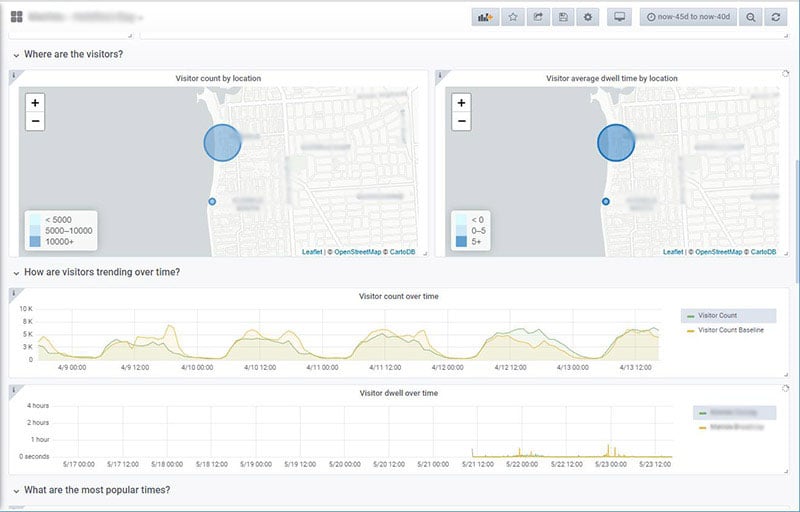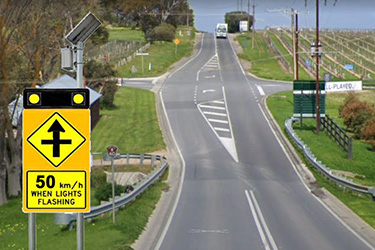Smart cities initiative: a roadmap to optimised resource usage
Ashby Martin, Published: May 29, 2019 - Updated: November 15, 2021 (7 min read)
The biggest challenge faced by local government when implementing smart city initiatives is understanding the strategy to drive actions to practical benefits.
In a previous smart cities article I wrote about the three stages of optimising resource allocation to allow your city to utilise resources with efficiency. This article addresses the practical steps that can be taken to move to predictive resource management.
A brief recap:
The first stage is where most cities currently are at; they react to external factors that indicate a response is needed. It’s a phase where park equipment breaks or bins overflow with the corrective action only coming after a public response.
The second stage is where resources are monitored to provide insights from data. The data supports planning, it provides early indication of an upcoming failure and it allows the actual resource usage to be measured. The data is the essential start to better resource allocation, less waste and better public experiences.
The third stage is the integration of the data into the business processes allowing actions to be made with less friction. Multiple data sources get fused together to allow the best decision to be made, considering all of the inputs.
This can all sound like an impossible nirvana, but there are practical steps to move to a more predictive state and I’ll flesh out the roadmap in more detail below.
Collecting data
1. Get the right data collection method in place
Collecting data is the first step and is an essential part of responsible public accountability. It’s something which should be part of procurement strategy; cities must procure services and products which have data access and ensure the city has ownership of that data. It’s also something which should permeate all departments, not just the Geographic Information System (GIS) or ITS (Information Technology Services) team.
Start by collecting data where the most resources are used (often parks and waste management). From a technical point of view, best practice for smart cities is to develop basic rules for storing data as well as providing some interfaces for collecting it, also known as APIs. Store data which changes over time in a time-series database. It will save headaches down the track and make it much easier to manage and use.
Situational awareness
2. Implement and contextualise data streams to provide insight
Once some data is being collected, it’s time to glean some value from it. Determine what your KPIs are and create some visualisations and reports that you can present to your organisation. Tools such as Power BI, Grafana or Tableau are great and will turn data points into easy-to-read charts. Seeing a visual representation of progress towards a goal is essential for motivation and understanding of the smart cities model.
Some tips for using dashboards to contextualise data:
- Represent your data in a way which makes it easy to identify long-term trends. It’s much easier to see a gradual increase on a graph versus a single gauge or value.
- Keep the visualisations simple and only use colour for values which represent alerts or abnormal conditions.
- Avoid skeuomorphic shapes and pictures as these introduce bias when interpreting the results.
Example of data visualisation showing visitor movements over time. Image: SAGE Automation
Efficient response
3. Build on the data infrastructure and create alerts to trigger action
Take the dashboards from the previous step and assess all decisions that are influenced by the information gathered. Create business rules and put alerts in place at thresholds where action needs to be taken. Initially these alerts are probably just email triggers but that’s a great place to start. Set them at a level which provides just enough time to take the corrective action before the condition becomes a problem.
Predicative control
4. Use advanced rules to automate based on what will happen
Once you have business rules and efficient response workflows in place, you can automate further by using advanced rules based on what is expected to happen given current operational conditions and historical responses. This step uses more advanced toolsets to make predictions, correlate events and trigger workflows and control actions.
This part of the smart cities plan involves building on email triggers and becoming more advanced with business rules that are in place. Perhaps the trigger needs to order more widgets or post a social media article. Identify a trigger where a person is the middle man performing an action and then work towards achieving the action directly from the trigger. Replacing people’s monotonous, trigger-based tasks will result in available effort which can be much better spent elsewhere.
Azure Logic Apps is a good suite of tools which can perform a range of actions from a variety of inputs. Cities may also want to consider business process model and notation (BPMN) where procedures are mapped out to consider the inputs, outputs and friction points.

Optimisation
5. Fine tune rules, processes, automation and actions
This step of fine tuning represents the iterative approach to the improvement process through eliminating waste and inefficiencies, improving response times and quality of service.
Cities should continue to collect data and expand the ways in which it is used through small incremental improvements. Of course, it’s important to measure the progress at each step to understand the areas which are providing the most benefit.
A word on effective project management: An agile approach to optimisation is an effective way to manage this process. Here, the council or organisation identifies all areas in which the processes or tools can be improved, then arranges the items in priority order. This work forms a long list that developers can estimate and work from, delivering a set of iterative improvements every two weeks. This approach ensures that the city gets the absolute best result from resources spent on smart city projects and future work can be planned on a realistic road map.
These steps can help facilitate optimised resource usage
At SAGE, we’re excited about all of the steps in a smart cities plan. We have a wide range of expertise that can help your city move through these steps to a point where resources are being used without waste and people are informed and engaged in the most useful work.
Many of these initiatives and tools have been in place in large industry for a long time, and SAGE understands how these processes can be applied to local government.
Get in touch with us if implementing these tools and maximising efficiency is something you would like to know more about.
If you’re still unsure what a solution might look like for you, check out my video on what we’ve delivered for the City Of Marion:
SAGE Automation delivers agile, scalable and secure solutions that don’t just solve current problems, they preempt and deter future ones, helping your organisation thrive. With years of experience working in defence, infrastructure, resources, utilities and manufacturing we have the expertise you need to custom-build or perform manufacturing maintenance on your equipment for maximum ROI.









